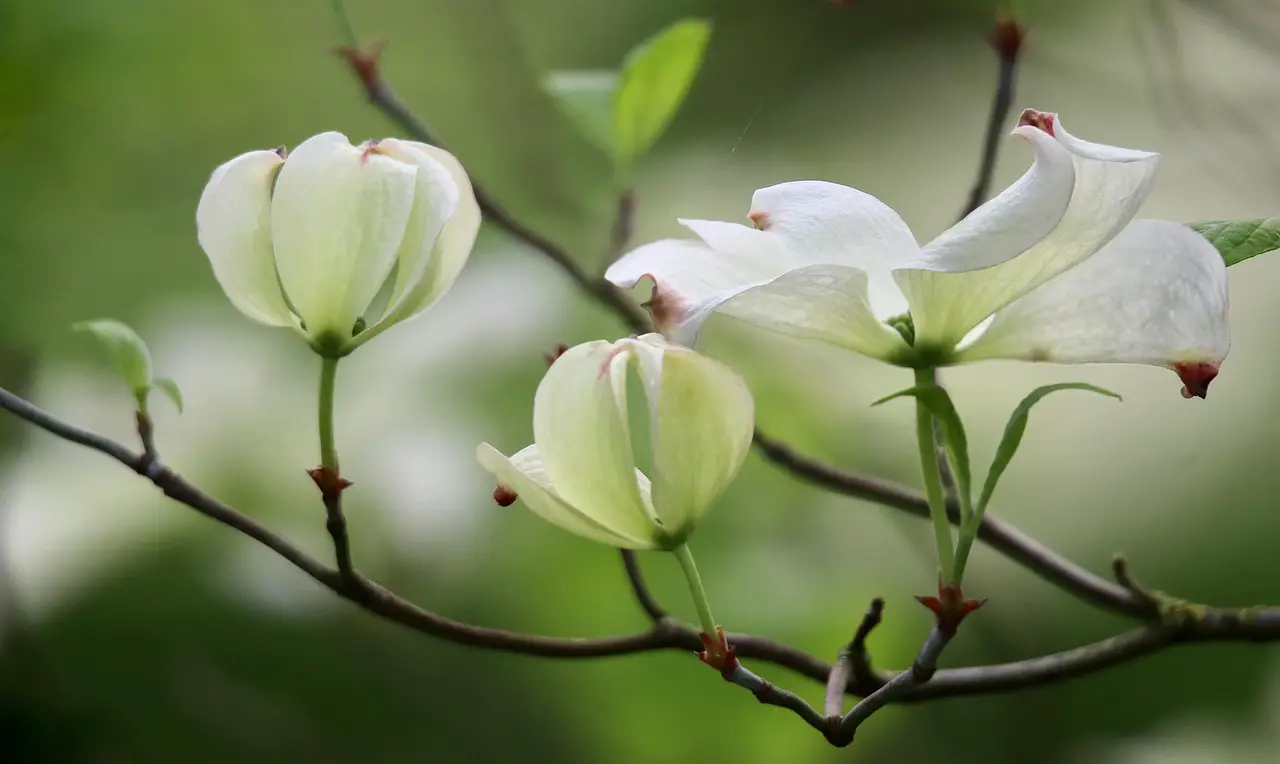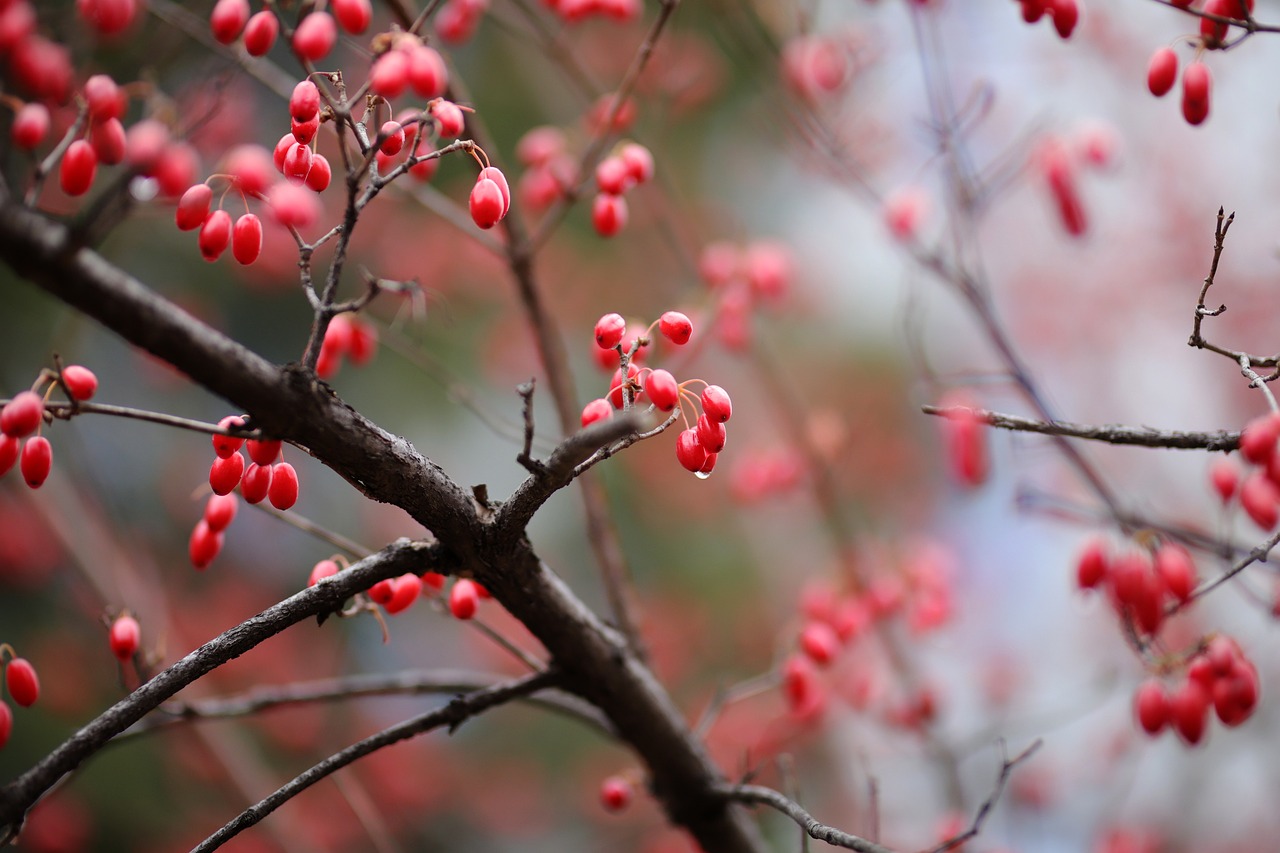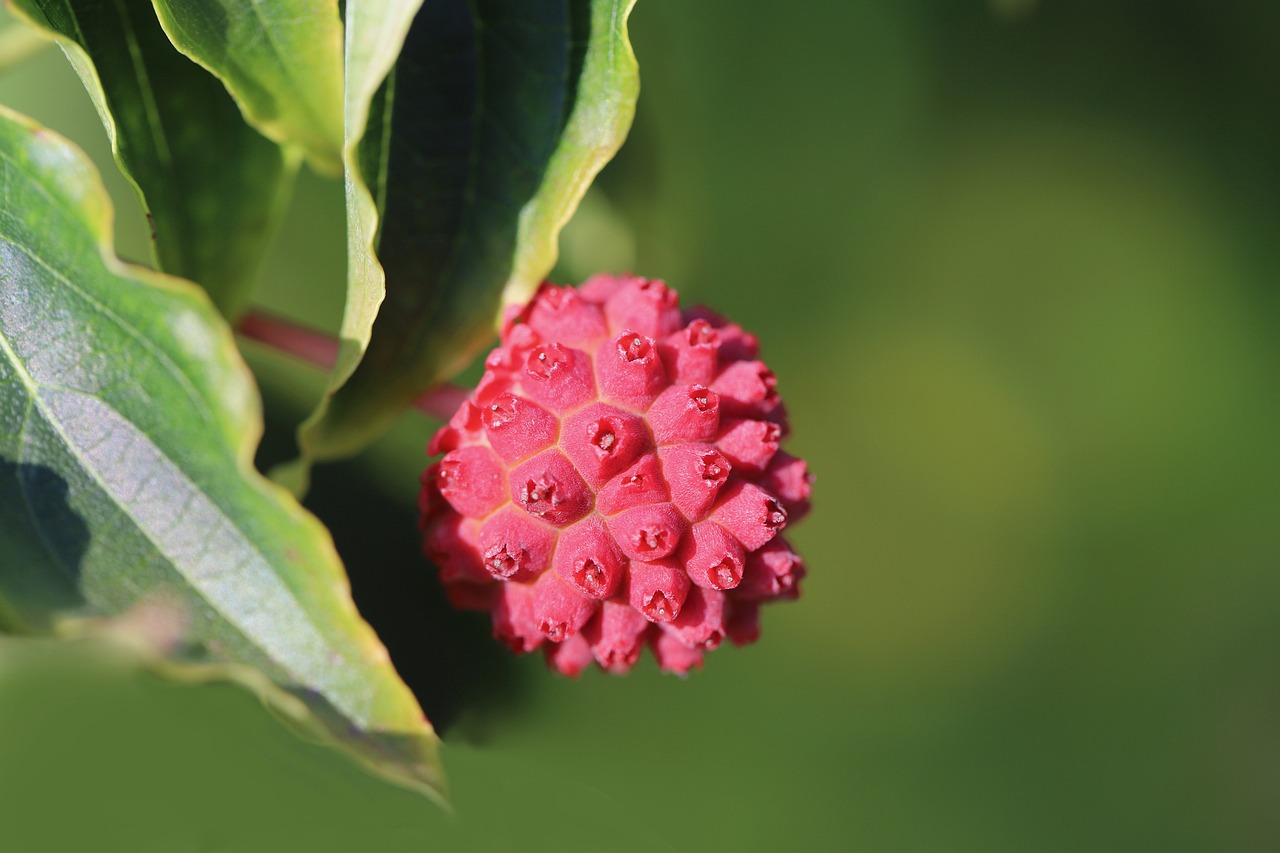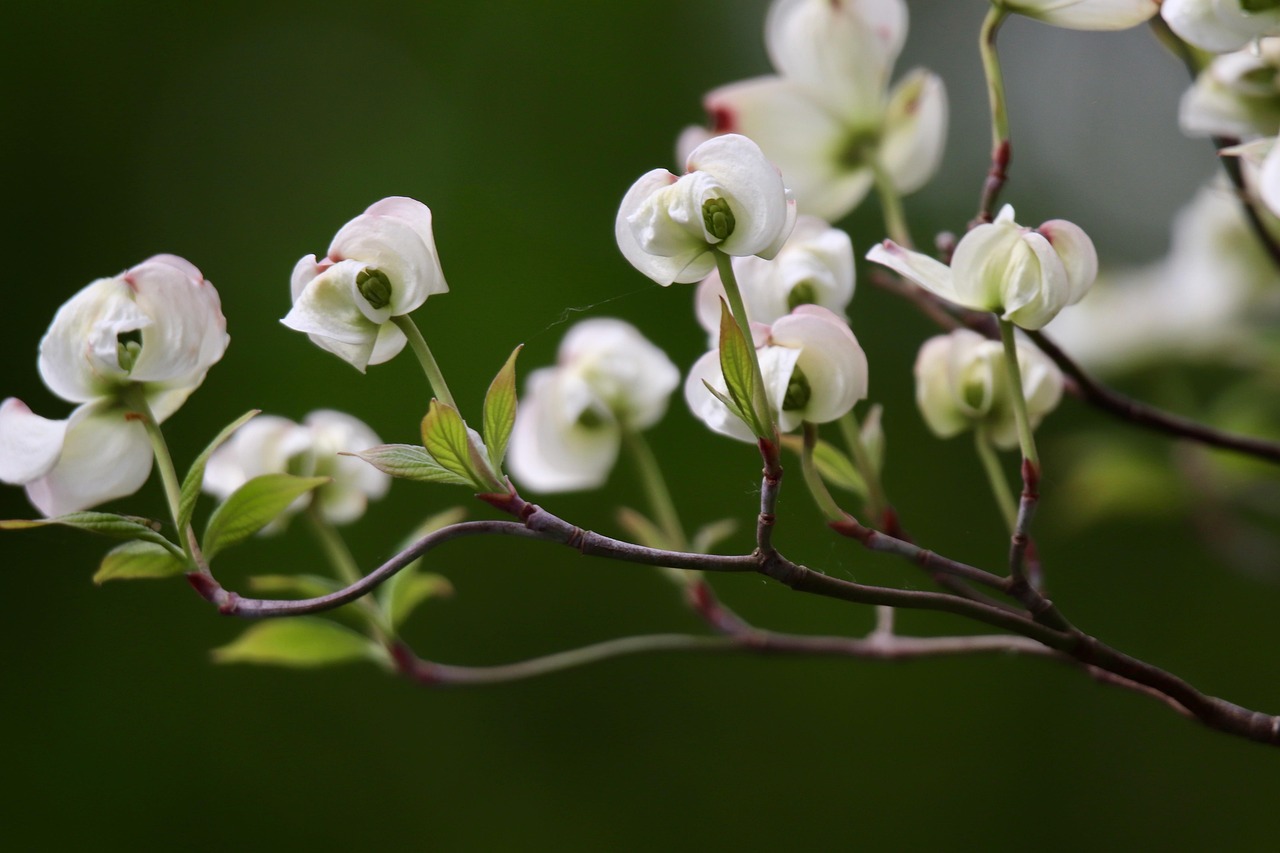Pruning dogwood trees can create effective natural fencing solutions. By shaping their growth and promoting dense foliage, these trees can form an attractive and functional barrier, enhancing privacy and adding beauty to any landscape.
Dogwood trees, known for their stunning blossoms and vibrant fall colors, are a popular choice for gardeners and landscapers alike. They belong to the genus Cornus and are native to various regions of North America. Dogwoods are versatile, thriving in different soil types and climates. Their growth habits can be tailored through proper pruning techniques, making them ideal for creating natural fencing.

Natural fencing with dogwood trees not only provides privacy but also attracts wildlife. Birds and beneficial insects are drawn to the flowers and fruits produced by these trees. Moreover, dogwoods can improve the aesthetic appeal of your yard or garden, blending seamlessly with other plants while offering a living boundary. Understanding how to effectively prune these trees is crucial for maximizing their potential as a natural fence.
Understanding Dogwood Growth Patterns
Before pruning dogwood trees, it’s important to understand their growth patterns. Dogwoods typically grow in a layered structure, with a mix of vertical and horizontal branches. This growth habit can be categorized into different types based on the species:
- Cornus florida: Also known as flowering dogwood, this species has a broad crown and can grow up to 30 feet tall.
- Cornus alternifolia: Commonly referred to as pagoda dogwood, it features a tiered branching system and typically reaches heights of 15 to 25 feet.
- Cornus sericea: Known as red osier dogwood, this species is often used for hedges due to its dense growth and vibrant red stems.
Each species has unique characteristics that influence how they should be pruned. Understanding these traits will allow you to shape your dogwood effectively and achieve the desired fencing look.

When to Prune Dogwood Trees
The timing of pruning is essential for the health of dogwood trees. Pruning at the right time encourages vigorous growth and flowering. Generally, the best time to prune dogwoods is in late winter or early spring, just before new growth begins. This timing minimizes stress on the tree and allows wounds to heal quickly.
It’s also important to avoid pruning in the fall, as this can stimulate new growth that may not harden off before winter. Additionally, pruning during the summer can lead to excessive sap loss in some species. Observing these guidelines will ensure your dogwoods remain healthy while serving as an effective natural fence.
Essential Pruning Techniques
To achieve a well-structured and dense natural fence with dogwoods, several pruning techniques can be applied. Here are some essential methods:

- Thinning: Remove crowded branches to improve air circulation and light penetration. This promotes healthy growth and reduces the risk of disease.
- Heading Back: Cut back branches to encourage bushier growth. This technique helps maintain a compact shape while enhancing density.
- Removing Dead or Diseased Wood: Regularly inspect your dogwoods for any dead or diseased branches. Removing these promptly will help prevent the spread of pests and diseases.
Properly executed pruning not only improves the aesthetic appeal of your dogwoods but also enhances their ability to function as a natural fence. By following these techniques, you can create a lush, vibrant barrier that serves multiple purposes in your landscape.
The Benefits of Using Dogwood Trees for Fencing
Choosing dogwood trees for natural fencing offers several advantages compared to traditional fencing materials. Some of the key benefits include:
- Environmentally Friendly: Dogwoods contribute to biodiversity by providing habitat for various wildlife species.
- Aesthetic Appeal: With their beautiful flowers and foliage, dogwoods enhance the visual interest of any garden or yard.
- Cost-Effective: Once established, dogwoods require minimal maintenance compared to wooden or vinyl fences.
These benefits make dogwood trees an attractive option for homeowners looking to create a natural boundary that complements their landscape design.

Selecting the Right Dogwood Species
When considering dogwood trees for natural fencing, selecting the right species is crucial. Different dogwood varieties have distinct characteristics that affect their growth, appearance, and suitability for fencing purposes. Here are some popular dogwood species to consider:
- Cornus florida: This flowering dogwood is known for its stunning white or pink blooms in spring. It grows well in partial shade and prefers rich, well-drained soil.
- Cornus alternifolia: The pagoda dogwood offers a unique tiered branching structure. This species thrives in moist, well-drained soils and is excellent for creating a natural fence with an interesting shape.
- Cornus sericea: Known as red osier dogwood, this species has striking red stems that add visual interest year-round. It grows quickly and is ideal for hedging due to its dense growth habit.
Selecting the appropriate species based on your landscape needs and growing conditions will help ensure the success of your natural fencing project.
Preparing the Site for Planting
Preparing the site before planting dogwood trees is essential for their long-term health and effectiveness as a natural fence. Here are the steps to follow:
- Choose a Location: Select a site that receives adequate sunlight, preferably with some partial shade for flowering dogwoods.
- Test the Soil: Conduct a soil test to determine pH levels and nutrient content. Dogwoods prefer slightly acidic to neutral soil (pH 6.0 – 7.0).
- Clear Debris: Remove any rocks, weeds, or debris from the planting area to create a clean environment for the new trees.
- Amend the Soil: Based on soil test results, amend the soil with organic matter or fertilizers as needed to improve its fertility.
Proper site preparation will lead to healthier trees and a more effective natural fencing solution.
Planting Dogwood Trees
Once the site is prepared, planting your dogwood trees correctly is vital for their growth and overall health. Follow these guidelines for successful planting:
- Planting Time: The best time to plant dogwood trees is in early spring or fall when temperatures are cooler.
- Digging the Hole: Dig a hole that is twice as wide as the root ball but no deeper than its height. This allows roots to spread easily.
- Positioning the Tree: Place the tree in the center of the hole, ensuring that the root flare (the point where roots meet the trunk) is level with the soil surface.
- Backfill and Water: Backfill the hole with soil and water thoroughly to eliminate air pockets. Add mulch around the base to retain moisture.
Following these steps will ensure proper planting and support healthy growth for your dogwoods as they mature into a beautiful natural fence.
Maintaining Dogwood Trees for Optimal Growth
After planting, regular maintenance will help dogwood trees thrive and maintain their role as a natural fence. Here are some key maintenance practices:
- Watering: Ensure consistent moisture, especially during dry periods. Newly planted trees require regular watering until established.
- Mulching: Apply a layer of organic mulch around the base of each tree to conserve moisture and suppress weeds.
- Fertilizing: Fertilize in early spring with a balanced fertilizer designed for flowering trees to promote healthy growth.
- Pest and Disease Management: Regularly check for signs of pests or diseases, such as leaf spots or wilting. Implement organic pest control methods if necessary.
By maintaining your dogwoods properly, you can ensure they grow robustly and fulfill their purpose as an attractive, functional fence.
Creating a Multi-Layered Fencing Effect
An effective natural fence can be enhanced by creating a multi-layered effect with various plants. Incorporating different species at varying heights can increase privacy and biodiversity. Here’s how to achieve this:
- Select Companion Plants: Choose shrubs and perennials that complement dogwoods, such as viburnum, holly, or ornamental grasses.
- Layering Technique: Plant taller species towards the back and shorter ones in front. This creates depth and visual interest in your fencing solution.
- Seasonal Variation: Select plants that offer seasonal blooms or colorful foliage throughout the year to maintain visual appeal.
This multi-layered approach not only enhances the effectiveness of your natural fence but also creates a vibrant ecosystem in your garden.
Pest and Disease Considerations
Pest management is crucial for maintaining healthy dogwood trees. Common pests include aphids, spider mites, and scale insects. Additionally, dogwoods can be susceptible to diseases such as powdery mildew and anthracnose. Here are some tips on managing these issues:
- Regular Inspections: Frequently check your trees for signs of pests or diseases. Early detection is key to effective management.
- Natural Predators: Encourage beneficial insects like ladybugs and lacewings that feed on harmful pests.
- Proper Care: Maintain tree health through proper watering and fertilization, which can help reduce susceptibility to pests and diseases.
By being proactive in managing pests and diseases, you can protect your dogwood trees and ensure they continue to thrive as part of your natural fencing solution.
Seasonal Care for Dogwood Trees
Seasonal care is essential for the health and vitality of dogwood trees. Each season presents unique challenges and opportunities for maintaining your natural fencing solution. Understanding how to care for your trees throughout the year can lead to better growth and longevity.
Spring Care
Spring is a crucial time for dogwoods, as it marks the beginning of the growing season. Here are some important tasks to focus on during this season:
- Pruning: Conduct your main pruning activities in late winter or early spring before new growth begins. Remove dead or weak branches to promote healthy new growth.
- Fertilizing: Apply a balanced, slow-release fertilizer to support new growth. This will help your dogwoods develop strong stems and vibrant foliage.
- Mulching: Refresh mulch around the base of the trees to retain moisture and suppress weed growth. This practice is particularly helpful as temperatures begin to rise.
Summer Care
During the summer months, dogwoods require attention to ensure they thrive in warmer weather. Here are some care tips:
- Watering: Consistent moisture is vital, especially during dry spells. Water deeply and regularly to encourage deep root development.
- Pest Monitoring: Keep an eye out for pests such as aphids and spider mites. Implement organic pest control methods if necessary.
- Pruning: Light summer pruning can be done to remove any unwanted growth or weak branches, ensuring good air circulation.
Fall Care
As fall approaches, preparing your dogwoods for winter is essential. Consider these steps:
- Watering: Continue to provide water until the ground freezes. This is crucial for ensuring that trees have enough moisture reserves for winter.
- Leaf Cleanup: Rake and dispose of fallen leaves to prevent the spread of diseases that can affect dogwoods.
- Winter Protection: Apply mulch around the base of trees to insulate roots from freezing temperatures and regulate soil moisture.
Winter Care
Although dogwood trees enter dormancy during winter, there are still important tasks to perform:
- Inspect Trees: Regularly check for signs of damage from snow or ice. If branches are weighed down, gently shake them to prevent breakage.
- Plan for Pruning: Use this time to plan your spring pruning strategy. Identify any branches that need attention once growth resumes.
- Protect Young Trees: Consider wrapping young trunks with protective materials to shield them from harsh winter conditions.
Using Dogwoods in Landscape Design
Incorporating dogwood trees into your landscape design can enhance both functionality and aesthetics. Here are some creative ideas for integrating dogwoods into your outdoor space:
Creating Natural Boundaries
Dogwood trees can effectively delineate property lines or create private outdoor spaces. By planting them in staggered rows, you can establish a dense, natural barrier that adds beauty while providing privacy.
Layering with Other Plants
To create a visually appealing landscape, consider layering dogwoods with other plants. Here are some companion plants that work well with dogwoods:
- Azaleas: Their vibrant blooms complement dogwood flowers beautifully.
- Ferns: Planting ferns at the base of dogwoods adds texture and greenery throughout the year.
- Hostas: These shade-loving plants thrive under dogwoods, creating a lush ground cover.
Highlighting Seasonal Colors
Dogwoods offer stunning seasonal variations in color. Use their natural beauty to enhance your landscape design:
- Spring Blooms: The delicate flowers of dogwoods provide a burst of color in early spring, making them focal points in the garden.
- Summer Foliage: The lush green leaves create a vibrant backdrop for other flowering plants.
- Fall Foliage: In autumn, dogwoods display beautiful reds and purples, adding warmth to the landscape.
The Role of Dogwood Trees in Wildlife Habitat
Dogwood trees play a vital role in supporting local wildlife. They provide food and shelter for various species. Here are some key contributions of dogwoods to wildlife habitat:
- Nectar Source: The flowers attract pollinators such as bees and butterflies, which are essential for ecosystem health.
- Fruit Production: Dogwood trees produce berries that serve as food for birds and small mammals, especially in late summer and fall.
- Shelter: The dense growth habit of dogwoods offers shelter for nesting birds and other wildlife seeking protection from predators.
By incorporating dogwood trees into your landscape, you not only enhance your outdoor space but also contribute positively to local biodiversity.
Caring for Dogwood Trees in Urban Environments
Caring for dogwood trees in urban settings presents unique challenges due to environmental stressors such as pollution and limited space. Here are some strategies for successful care in urban areas:
- Selecting Suitable Varieties: Choose disease-resistant varieties that thrive in urban conditions, such as Cornus kousa, known for its resilience.
- Pest Management: Regularly monitor for pests and diseases that may be more prevalent in urban settings due to stress factors.
- Adequate Water Supply: Ensure proper irrigation practices, as urban soils may drain quickly and lead to drought stress.
Caring for dogwood trees in urban environments requires attention but can yield beautiful and thriving natural fences that enhance city landscapes.
Integrating Dogwood Trees with Other Landscape Elements
For those looking to create a harmonious outdoor environment, integrating dogwood trees with other landscape elements can enhance both beauty and functionality. Here are some ideas for effectively combining dogwoods with other landscaping features:
Combining Hardscapes and Softscapes
Dogwood trees can be paired beautifully with various hardscape features, such as patios, walkways, and walls. Consider the following:
- Patios: Position dogwoods near patios to provide shade and a natural backdrop for outdoor gatherings. The flowers in spring will enhance the aesthetic of your outdoor living space.
- Walkways: Plant dogwoods alongside walkways for a stunning visual effect. Their blooms will create a welcoming atmosphere as visitors approach your home.
- Retaining Walls: Use dogwoods to soften the appearance of retaining walls. The trees can cascade over the edges, creating an inviting look.
Incorporating Edible Plants
Another interesting approach is to plant dogwoods alongside edible plants. This combination can lead to a diverse garden ecosystem:
- Berry Bushes: Plant dogwoods near blueberry or raspberry bushes. The fruiting plants will benefit from the pollinators attracted by the dogwood flowers.
- Herbs: Consider planting herbs like chives or mint nearby. These can thrive in the shade provided by dogwoods while adding flavor to your garden.
Using Dogwoods for Erosion Control
Dogwood trees can also play a significant role in erosion control. Their root systems help stabilize soil, making them an excellent choice for areas prone to erosion. Here are some strategies for using dogwoods in this capacity:
- Slope Planting: Plant dogwoods on slopes to help hold the soil in place. Their roots will anchor the soil and reduce runoff during heavy rains.
- Buffer Zones: Establish buffer zones with dogwoods along waterways. This helps filter runoff and prevent soil erosion in riparian areas.
Understanding Local Regulations and Best Practices
Before planting dogwood trees, it is essential to understand local regulations and best practices. Some considerations include:
- Zoning Laws: Check with local authorities regarding zoning laws that may affect where you can plant trees on your property.
- Utility Lines: Be mindful of overhead and underground utility lines when selecting planting locations. Dogwoods should be planted away from these to avoid conflicts in the future.
- Natives vs. Non-Natives: Consider planting native dogwood species, as they are better adapted to local conditions and support native wildlife.
Final Thoughts
Cultivating dogwood trees for natural fencing solutions offers numerous benefits, from enhancing privacy to supporting local wildlife. With proper care, these beautiful trees can thrive in various environments, including urban settings. By selecting suitable varieties, preparing planting sites, and maintaining healthy growth through seasonal care, you can create an attractive and functional barrier that complements your landscape design.
The integration of dogwoods with other landscape elements provides opportunities for creativity and ecological enhancement. Whether used for erosion control or combined with edible plants, dogwoods contribute positively to both aesthetics and functionality. Understanding local regulations ensures that your efforts are compliant and sustainable.
In conclusion, pruning and caring for dogwood trees is not just about maintaining their shape; it is about fostering a vibrant ecosystem that benefits both you and your environment. With their stunning seasonal displays and ecological contributions, dogwood trees are a valuable asset in any garden or landscape design.
